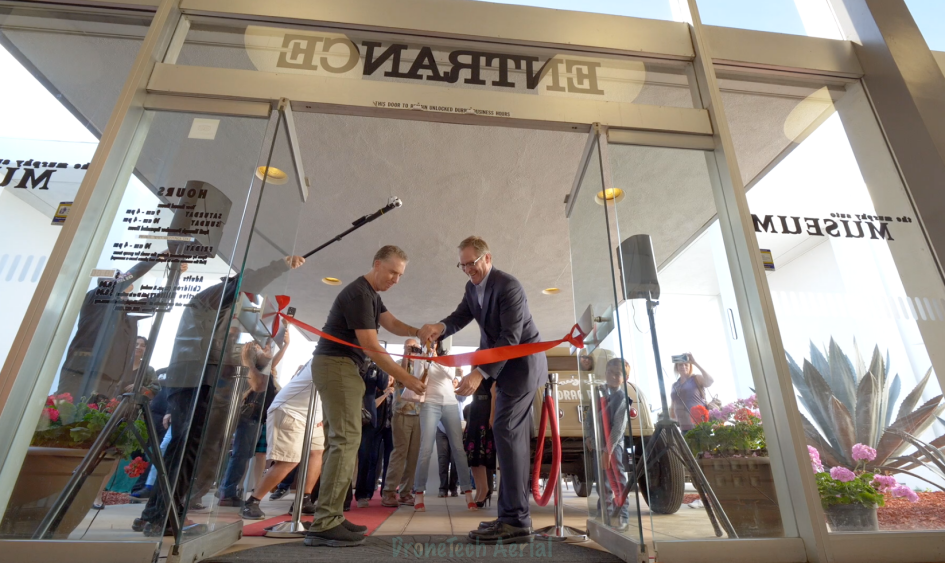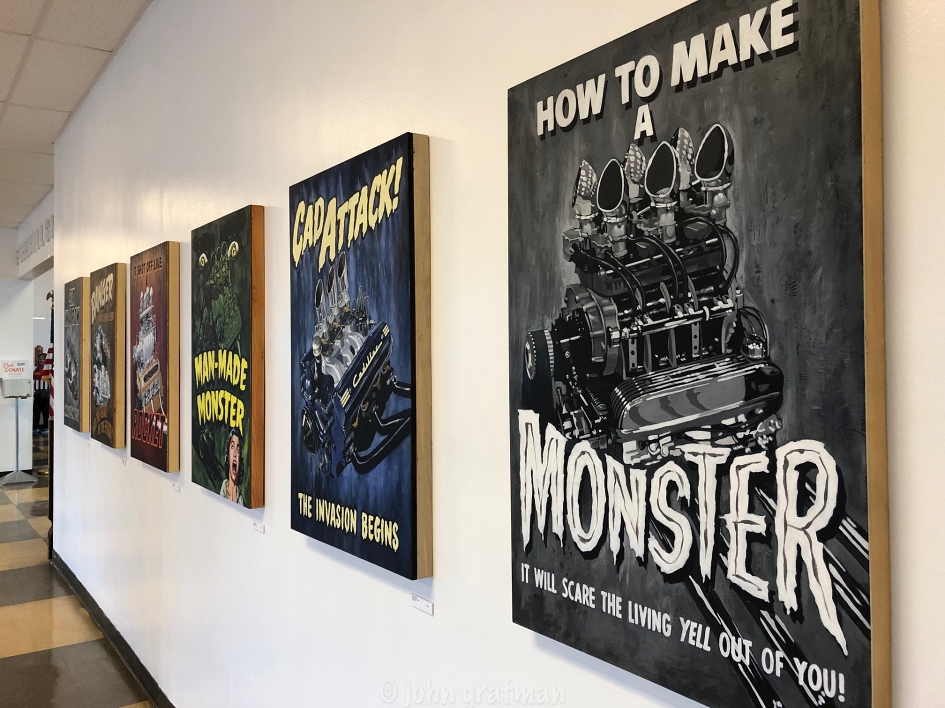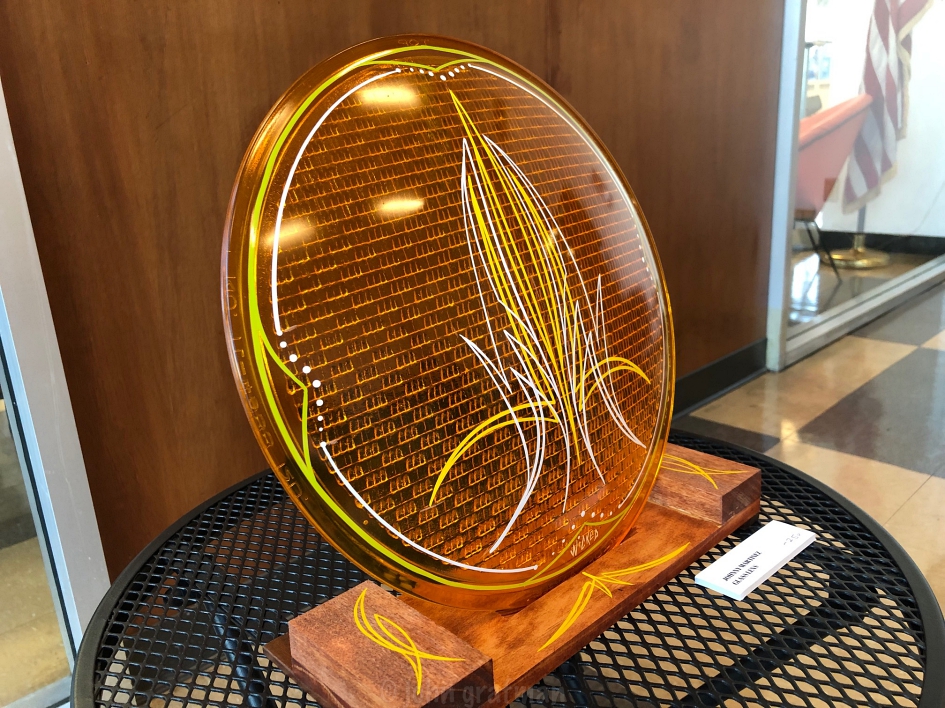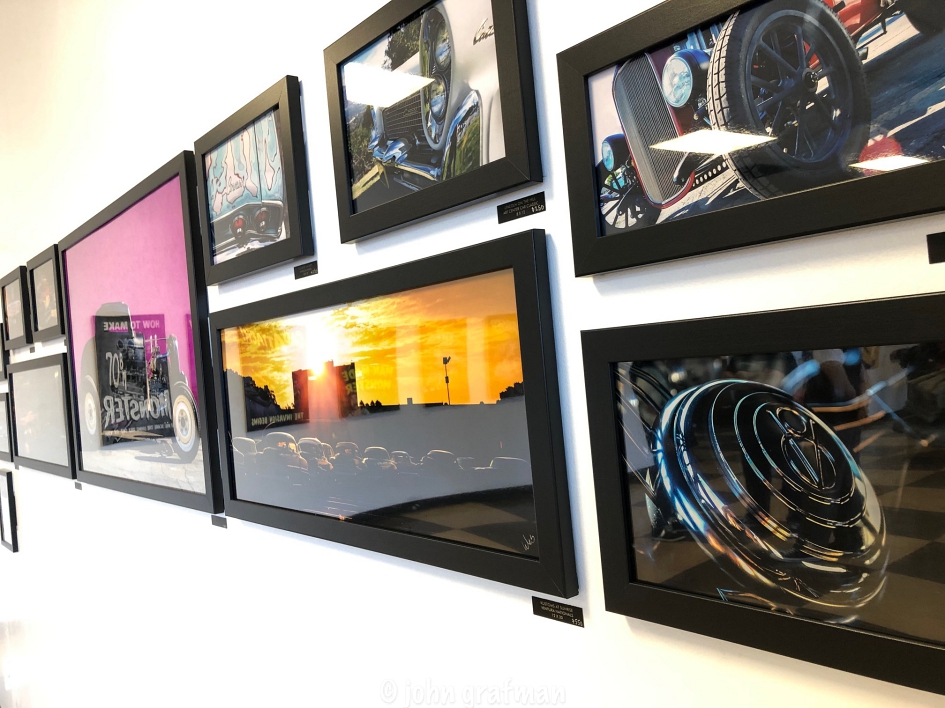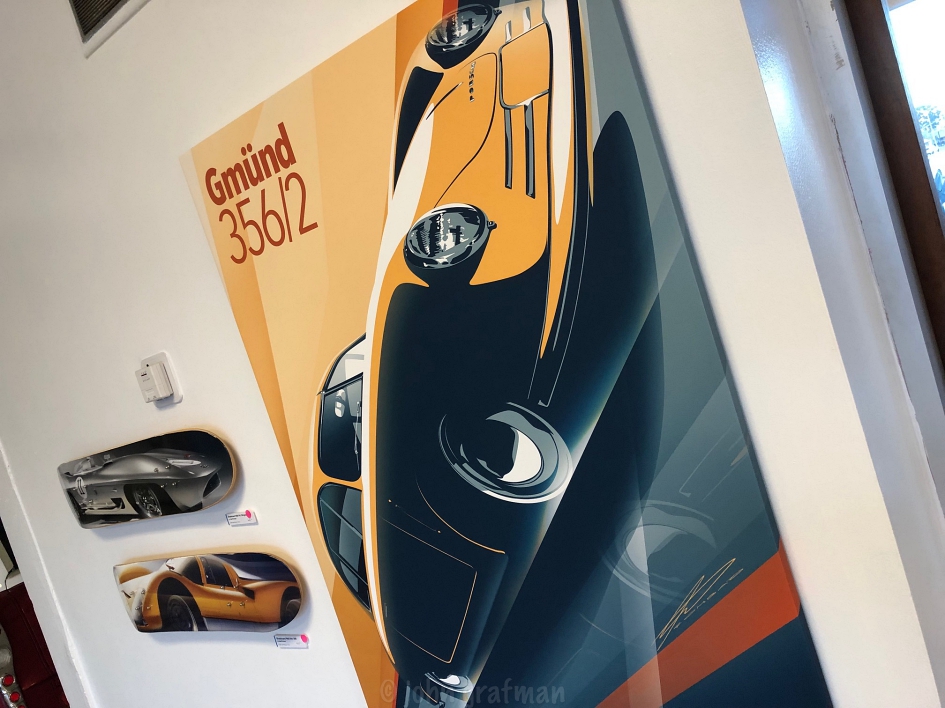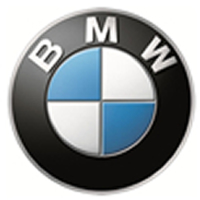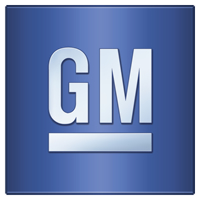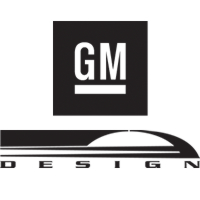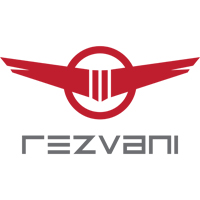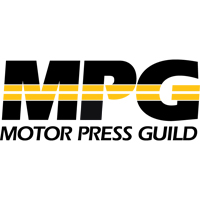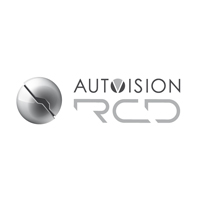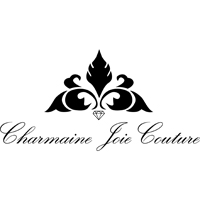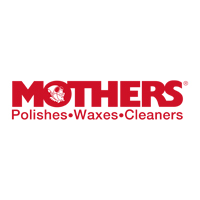Just north of Los Angeles County in the mild, coastal city of Oxnard is the Murphy Auto Museum. Not being in the center of LA, the museum hasn’t been in the limelight. That’s starting to change. Heating up the town is the brand-new Fireball Gallery, showcasing the local automotive fine artists.
Reporting and images of artwork by John Grafman
The museum already houses a vast selection of cars and memorabilia, so that base is already covered. However, just inside the entry is the gallery, offering more in terms of car culture.
The opening night gala of the Fireball Gallery is packed with enthusiasts, media, drinks, and MC Ken Vela providing onsite feedback from the artists. This is special, as often wonderful artists don’t get the recognition that they deserve. The appreciative smiles on the faces of the friends and family of the artists really tells the tale.
In their own words, Fireball Tim Lawrence and the artists being featured are providing us a little insight into this expansion, as well as a bit about their work.
This is special, as often wonderful artists don’t get the recognition that they deserve
Fireball Tim delves into just how did the Fireball Gallery at the Murphy Auto Museum came about, what makes this gallery and the artists unique, and finally what’s next?
Fireball Tim Lawrence – Fireball Gallery Curator
The owner of the Murphy (David Neel) and I got together to discuss what we could do. Given a 5-year business plan, we developed a way to increase awareness of the museum but separate it from the 300+ existing Museums in the States. The concept of a stand-alone art gallery was hatched to bring awareness to automotive artists in a way that was celebratory, focused and expansive.
In the traditional sense, automotive artists have been known to have booths at car shows and sell their work as prints on a small scale. This perception of value was low. The goal of the museum is to increase that perceptual value and bring awareness to the tremendous latent talent that dwells in the automotive community.
There is nothing like it. I personally called these 300 car museums across the country only to discover that no one had a stand-alone gallery. Many had art that populated the walls, but either none of it was for sale or it got lost among the vehicles. What we’ve done at The Fireball Gallery is envision something that compliments the museum yet stands as its own business entity.
What we’ve done at The Fireball Gallery is envision something that compliments the museum yet stands as its own business entity
Gallery TWO will feature 12 artists instead of the current five. Categories in sculpture, paint, illustration, design, pinstriping, cartooning, photography, and more. Many celebrity artists will be featured, and each show every 3 months will be completely different. We are even building a tiki sculpture garden with live music, tiki bar and micro museum. We also have a kid’s gallery planned, so it’s cool.
Our promotional engine for the artist is a juggernaut, which includes social and our TV show “Fireball Malibu Vlog.” We will create awareness like no other museum.
In the Gallery Store, we will feature artist’s work on a print scale, diecast, swag-wear, new automotive coloring books and classic vintage items. Plus, our Mid-Century Modern Lounge will evolve. But to be clear, we are running a marathon and not a sprint. So, although you’ll experience massive changes for each show, these changes will consistently evolve. People will be blown away.
Chris Garcia “The Betty Hunter” – Painter / Illustrator
It was my dad who got me into cars. He painted cars for a living and we always had classic cars. As a kid he used to take me to the drag strips and car shows. He loved Hotrods, Funny Cars and Dragsters. That was his era and mine too. I used to draw cars for him all the time. Later we built and painted cars together. He taught me how to work on them, paint them, and do graphics on them. I have so many great memories in the garage with my dad. He taught me to treat every car like it was my own.
I have so many great memories in the garage with my dad. He taught me to treat every car like it was my own.
Significant influences: Early Illustrators and Poster Artists. I study a lot of horror and pulp posters from the 30’s to the 60’s, old covers of Car Magazines and the simple graphic designs of that era. Also, pinup artists and the artists who had to illustrate car parts in the automotive manuals. I love seeing how they conveyed information before computer renderings. To me everything looks better than when it’s done by hand.
For this series it’s definitely the Motors. The motor is the heart of the car. So, with my “Motor Series” I want to connect with everyone and make posters of all the staple engines that we love as I continue to paint more. Every car lover has a dream engine or even what they’d love to do to their engine, whether it be dressing it up or hopping it up.
Johnny Martinez – Pinstriper Extraordinaire
My passion for cars and motorcycles came from my childhood, as a small boy I collected and played with cars, and for hours as a small boy played cars, imagining real life situations. At 10-years old I had a mentor in the neighborhood who was building a hot rod and he was my real start with interest in cars.
My passion for cars and motorcycles came from my childhood, as a small boy I collected and played with cars
A good friend Rick Grindle (who has since passed) was my influence. He pinstriped everything I ever owned, and I watched carefully when did work for me. I watched others at shows, but Rick was my real motivator, from that I self-taught myself to pinstripe.
My work is so diversified in that I can pinstripe almost anything and for the Gallery it’s important to me to have just that, “diversity”. So, displaying everything from skate decks to a surfboard, bowling pins to framed pictures, and other things shows diversity. My personal 1929 Ford hot rod is displayed just outside, which shows my work on an auto.
Wes Nielsen – Photographer / The Guy behind the Camera
I wasn’t into cars as a kid. I didn’t even grow up with a family that was into cars and then that all changed when I went to junior college. Then, I decided as a way for me to save money, I would learn to work on the truck I owned. That first general automotive class started a passion for the cars and the automotive industry. From a lifelong career working in the aftermarket automotive industry to starting The Daily Driver Project to cover car events all around Southern California it has been a wonderful voyage so far.
As a way for me to save money, I would learn to work on the truck I owned
It was difficult to narrow all my photos down to the 11 that I am using. I started by going through the 1000s of photos that I have taken over the past 6 years since I started covering car shows. At first, I narrowed it down to 200 photos. I sent those to a very good friend and asked her to give me around 30 photos. She gave me about 50 and I sent those 50 off to another friend who narrowed it down to about 25. I used what they sent me added a few of my favorites and had 11 prints made for the show.
Geoff Ombao – Painter / Illustrator / Designer
Gallery One (the first in a series of exhibits at the Fireball Gallery) is meaningful to me on several levels. To me, the gallery’s existence validates the genre of automotive fine art, which can sometimes be overlooked. I’m happy that the gallery exposes many different aspects of car culture to the public… Gallery One included a pretty diverse assortment of subject matter and styles.
On a more personal level, it is an honor to be included in a group of talented artists, and quite wonderful to get such positive validation from the opening reception’s attendees. Though creating art is an “inward facing” activity; when I am creating my art, I am largely working in a vacuum. But the work kind of needs (or “wants”) to be in front of an audience, and this can be both thrilling and nerve-racking!
The work kind of needs (or “wants”) to be in front of an audience
Choosing which pieces to display is more difficult that it might seem. As an artist, I kind of view all of my pieces as my “babies”, but ultimately, there are many factors that go into my choices… which pieces would look best in the room (based on the room’s size/lighting/the sizes of the walls), how to both complement and contrast the other work being shown, what pieces are the best fit for the museum, and which pieces best represent my current style.
I like to work digitally, using Adobe Sketch (on an iPad Pro with an Apple Pencil), and Adobe Photoshop/Illustrator (on a MacBook Pro and Wacom Tablet). I also use Autodesk Alias, but that’s for design work, and not necessarily for my fine art work (yet).
Working digitally gives me the ability to edit more freely than when working with analog media. The computer (and tablet) also provide a wealth of tools, and an infinite palette of colors to choose from. Lastly, the laptop and tablet’s portability means that I can work wherever I want… often I like sketching in a local coffee shop… an occasional change of scenery is a great way to break creative block. Before working digitally, I had to studied “traditional” rendering and sketching techniques intensely… it’s essential to master “analog” tools before going to digital.


